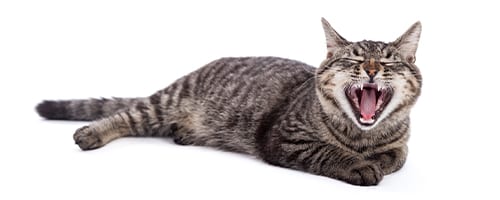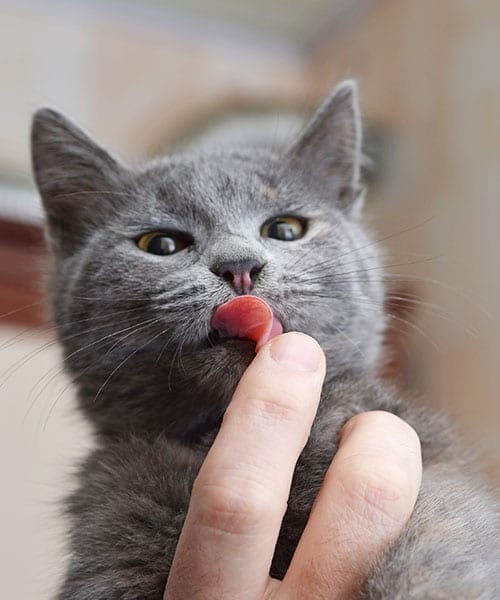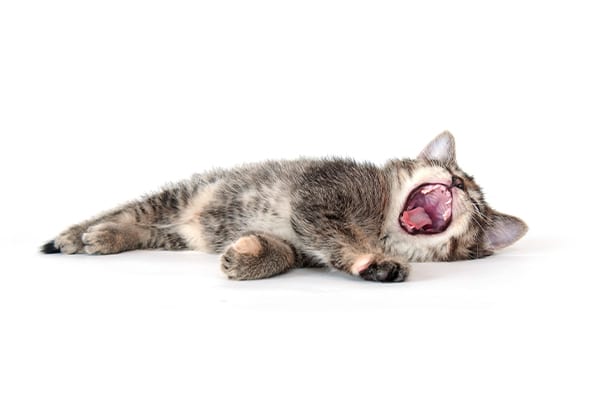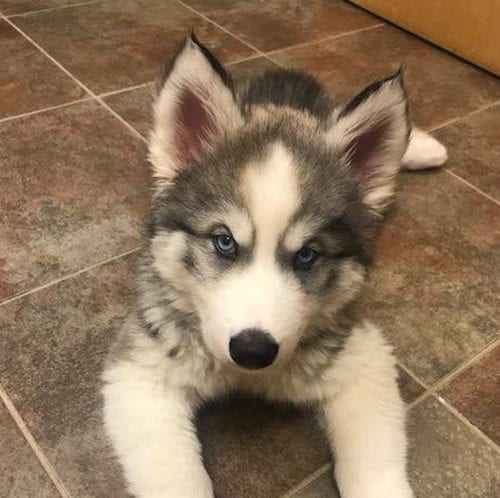Dog and Cat Teeth Cleaning in Canton
Many misconceptions exist about dental care in pets. Unlike in people, dog and cat teeth cleaning is less of a cosmetic procedure and much more a medical treatment that prevents pain and disease later in life.
Dental pain in pets is often misperceived since they are unable to communicate their discomfort in ways we can understand. Therefore, it is important to consider your pet’s daily behaviors and look for changes that could indicate a problem.
It is very important that you educate yourself before your pet undergoes any dental procedure. Cleaning the tartar from the parts of the teeth above the gum line is only a very small part of dental care in pets and does nothing to address the deeper areas below the gum line and the roots of the teeth, which is where infection and disease primarily occur. While many facilities offer "teeth cleanings" for a very low fee, you often get very little benefit for your money as your pet's overall health is not improved and can actually be endangered by improper protocol.
Abscesses are one such hidden problem that can be caused by predisposing factors in pets, and can often go undetected if these factors are ignored. While dentistry generally involves dog and cat teeth cleanings above and below the gum line, there are other issues we need to take into account as well.

Riverstone Animal Hospital follows the guidelines established by the American Veterinary Dental College to give your pet the health benefit of quality dental care: Professional dog and cat teeth cleaning under properly monitored anesthesia, X-ray evaluation of all the teeth and surrounding structures, treatment of areas below the gum line, and, if needed, the ability to perform oral surgery to remove infected or damaged teeth.
Dental disease, along with its proper treatment in pets, is a rapidly emerging field, and its significance to the quality of life of our pets is increasing. Our goal on this page is to provide you with a reliable source of information and help you understand what may be going on in your pet’s mouth. For more information, please click on the topics below. We have also included a section at the bottom of the page with handouts that address frequently encountered dental issues. If you have any questions not addressed on this page, please feel free to give us a call at (770) 479-7141.
Frequently Answered Questions about Pet Dental Treatment:
What to Expect During Your Dog or Cat's Teeth Cleaning
Here at Riverstone Animal Hospital, we take great care to treat care your pet safely and help them recover quickly. Each dog or cat teeth cleaning and dental treatment includes pre-anesthetic safety screening, antibiotics, pain control, warmed electrolyte fluids, and continually supervised anesthesia and recovery. To provide our patients with the best results, we use the following six-step dental treatment:
Step 1:
We evaluate the mouth, gums, and teeth for gum disease, fractured teeth, infection, and masses. The results are recorded in your pet’s records.
Step 2:
Using an ultrasonic scaler, we clean above the gum line to remove tartar buildup.
Step 3:
We clean below the gum line using a hand scaler and curette.
Step 4:
We polish the surface of the teeth with fluoride paste to smooth out rough spots and strengthen the enamel.
Step 5:
We take dental x-rays to evaluate the tooth roots, which is where many dental problems occur. X-rays also allow us to check for bone loss and missing or fractured teeth.
Step 6:
We evaluate the gum pockets and provide any necessary treatments, including antibiotics, root planning, gum surgery, or surgical tooth extractions.

Cat Teeth Cleaning and Dental Care
Cats are masters at hiding their illnesses and other potentially serious health conditions, including dental problems. Even if you think your cat’s mouth is healthy, it’s important to bring them to the vet at least once a year for an oral exam. One of the reasons we recommend this is that there are several dental problems that commonly affect cats, such as resorptive lesions, that are often overlooked. Without treatment, many dental problems can leave your cat in a great deal of pain or discomfort.
As a Cat Friendly Practice, Riverstone Animal Hospital wants to prevent oral problems from developing or worsening for your cat friend. We also want to educate our clients on the importance of regular cat teeth cleanings and dental care. Consider the two common dental conditions below to learn more about why it’s so important to bring your cat in for an oral exam at least once a year.
Resorptive Lesions
Tooth resorption is a progressive condition that involves the loss of tooth structure, but its exact cause is unknown. Resorptive lesions typically begin as a loss of tooth enamel but can eventually affect the pulp canal. Some lesions are visible to the naked eye (dark red on the teeth and/or along the gum line), but others can be hidden under plaque or swollen gums. In both cases, they can be quite painful, which can lead to:
- Aggressive or irritable behavior
- Change in appetite
- Difficult chewing
- Increased salivation
- Mouth bleeding
Refer to our resorptive lesions handout to learn more about this condition. If you think your cat has resorptive lesions, give us a call at (770) 479-7141 to schedule a comprehensive exam and dental X-rays. Treatment can include a full or partial tooth extraction.
Oral Tumors
Another dental condition that can affect cats is oral tumors. Although about half of all oral masses in cats are benign, some of those that are malignant (squamous cell carcinoma) can be very aggressive. This is why it’s so important to have any growth in your cat’s mouth examined and biopsied so you can be sure the growth is benign. You can learn more about oral tumors by referring to the following oral tumors handout.
Be proactive about your cat’s oral health, and schedule a dental exam here at Riverstone Animal Hospital today.


